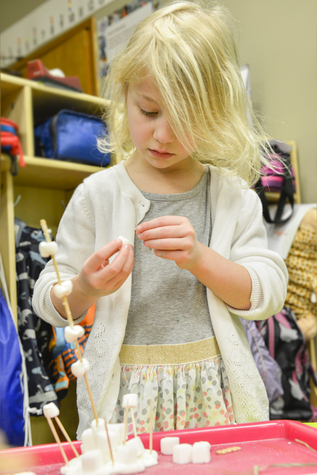|

Big ideas, little people
Serving young gifted students is complicated, in large part because of their asynchronous development. All gifted children develop asynchronously – their intellectual development is out of sync with their social, emotional, and physical development. In the early years, the differences in their development are especially apparent. Young gifted children often talk like little adults. You hear the word "actually" a lot as they correct your mistaken understandings about everything from LEGOS to planetary science to why ice cream before dinner is a perfectly valid idea. But they are still young, so after a rational discussion of the pros and cons of pets in families, can throw a beautiful, screaming temper tantrum because you said no to getting a puppy. They have big questions about life and death, but are young and want you as the parent to have clear and concrete answers to the unanswerable. At school, this asynchronous development can lead to frustration in typical classroom settings. At writing time, the 4-year-old who has a complex and fanciful story in his head, but who still struggles to form letters, might decide to give up on writing because it is too frustrating. Parents and teachers might be misled by the child's articulate speech and big vocabulary, and set expectations for work and behavior that is beyond her maturity level and ability to be successful. Early readers can become bored with books for their age. Yet, books that sync with their reading levels might not sync with attention span or emotional maturity. At Seabury, our early learning program is designed specifically to meet the needs of these asynchronous learners. The prekindergarten and kindergarten classrooms are full of blocks, toys, craft supplies, books and materials that support play and imagination, and are developmentally appropriate for young learners. You won't see kids sitting at desks filling out worksheets. Worksheets are usually looking for the short, “correct†answer. We want our kids to be thinking about big ideas and creating possibilities. Young learners need to learn with their whole bodies. In a Seabury early learning classroom, you will witness kids engrossed in deep conversations as they build complicated block structures. You will see them using the language of scientific inquiry as they study concepts of interest to them, creating hypotheses and testing theories through experiments and research quests. When it's math time, you might see some students physically solving addition and subtraction problems by moving along a huge number line on the floor while others are developing number sense using a variety of manipulatives and activities that allow them to explore complex ideas in age-appropriate ways. At writing time, you will see some students writing independently and others dictating their big ideas to teachers. Then they may copy some or all of what they dictated so that they can experience the joy of getting their ideas on paper, while working on developing the physical skill of handwriting. ... Read more at Seabloggery
|
In This IssueUpcoming EventsMay 30th June 7th June 7th |
Seabury School
|
Elementary Campus
1801 53rd Street NE |
Middle School Campus
925 Court C |
|
Having trouble reading this email? View it in your browser. Not interested anymore? Unsubscribe. You\'re receiving this email because you are a subscriber to the Seabury School newsletter. |
||

